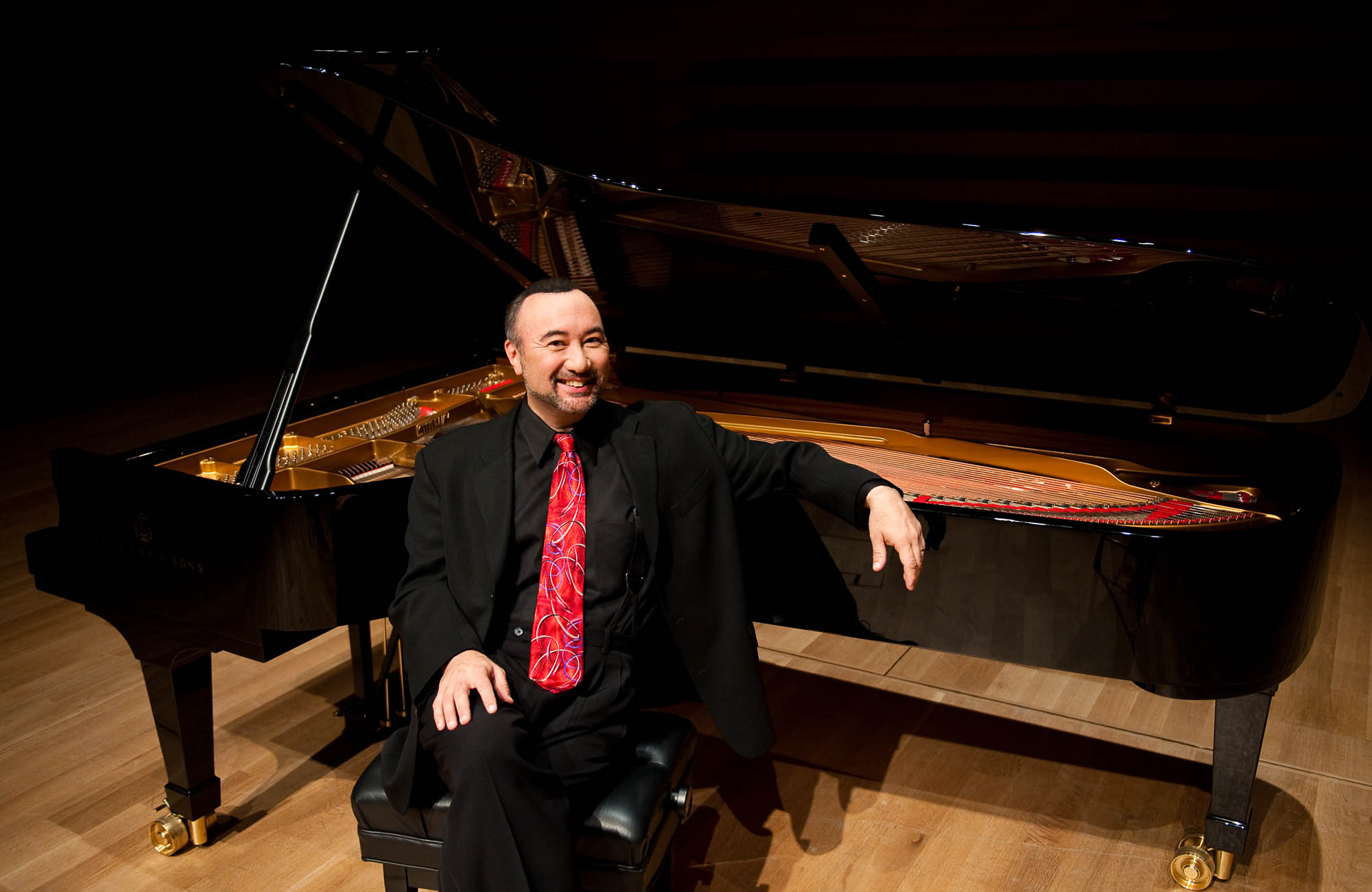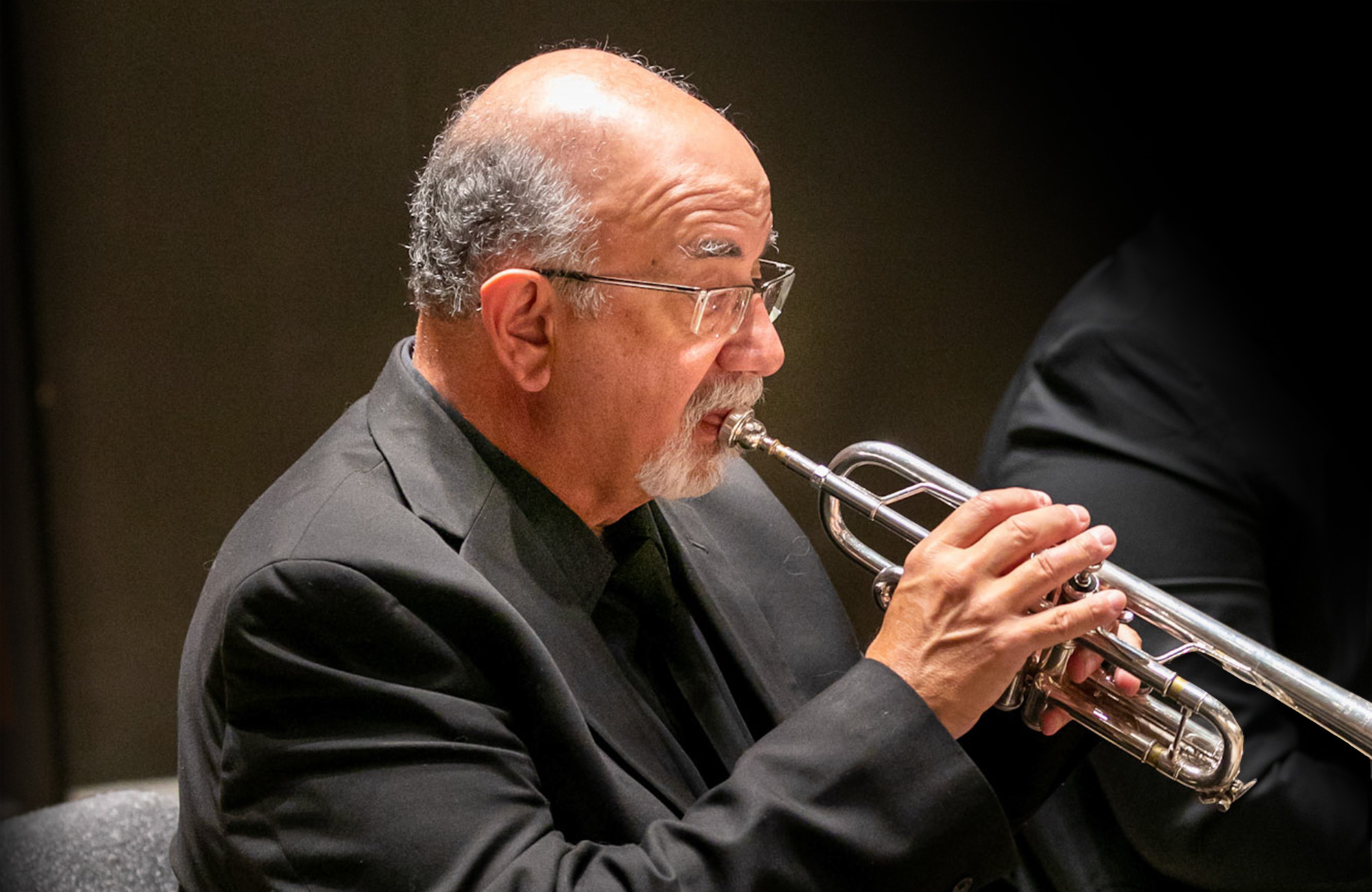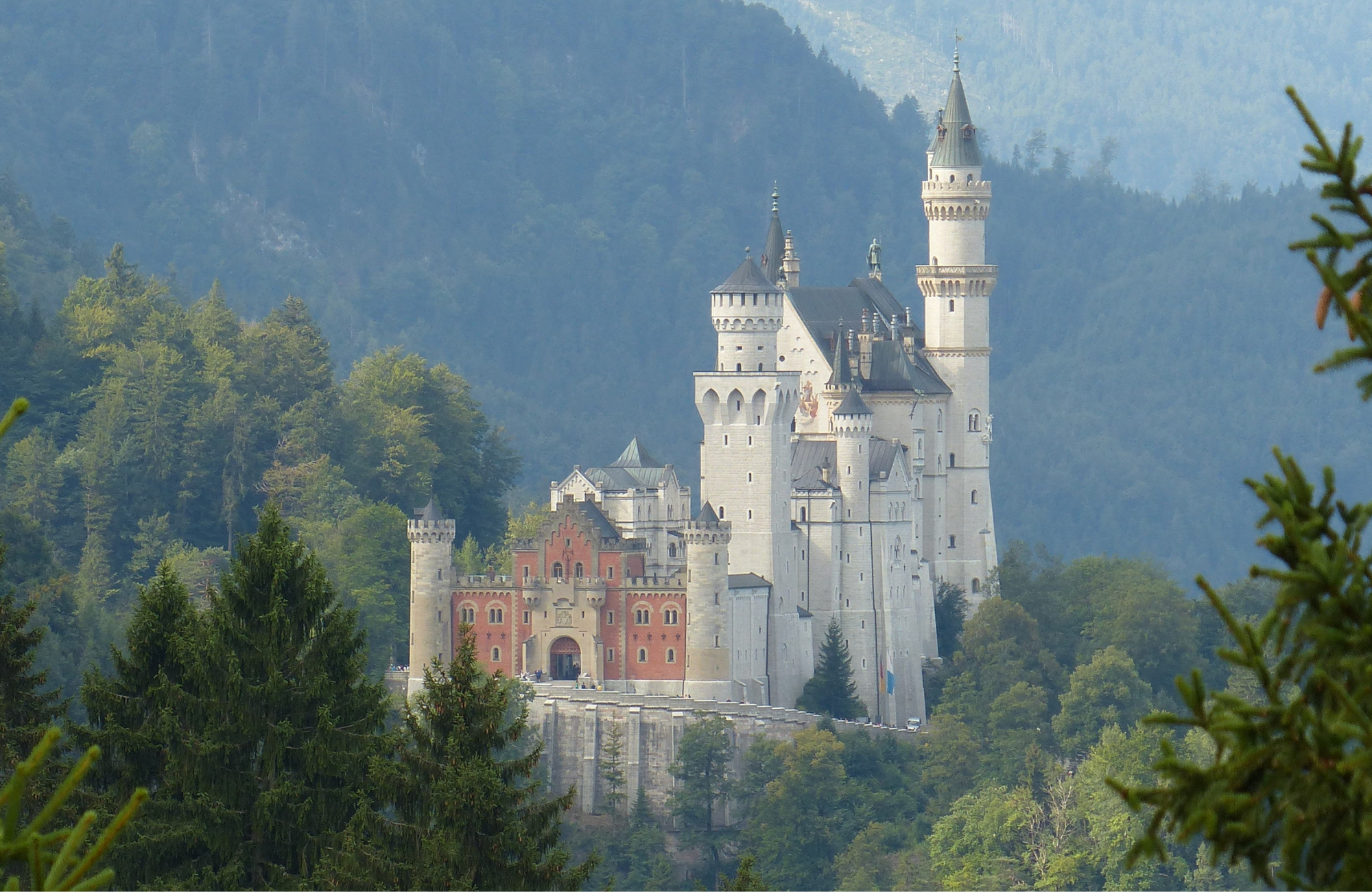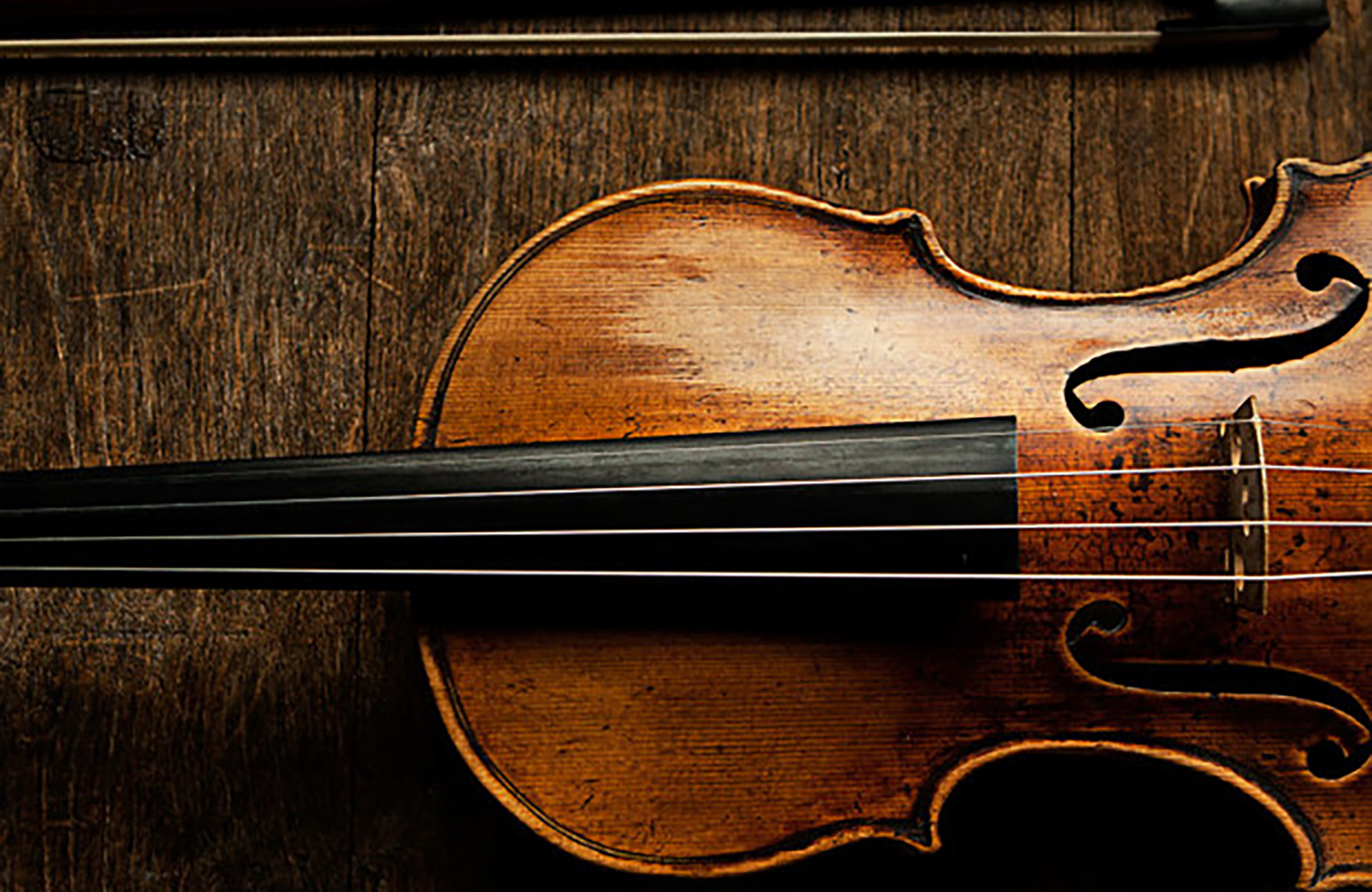Three comedic selections will lighten your mood: Wolfgang Amadeus Mozart’s The Marriage of Figaro, Overture, Dmitri Shostakovich’s Piano Concerto No. 1, containing a starring role for John Raschella, Symphoria’s principal trumpet, and Igor Stravinsky’s clownish Pulcinella Suite.
Please read our COVID policies here
PROGRAM
MOZART: Nozze di Figaro, Overture, K. 492
SHOSTAKOVICH: Piano Concerto No.1 in C minor, op.35
STRAVINSKY: Pulcinella: Suite
PROGRAM NOTES
The weather in Central New York may be unpredictable, but when we scheduled this concert last year, we felt sure that a jolt of good cheer would be welcome in late February. So we put together a program of lighter fare by three composers who have already appeared, in more serious moods, earlier this season.
Our central work is the 1933 Piano Concerto No. 1 by Dmitri Shostakovich (1906–1975)—and it’s hard to imagine it comes from the same composer whose darkly anguished Cello Concerto No. 1 we offered on the second Masterworks concert. The Cello Concerto was written by ...
The weather in Central New York may be unpredictable, but when we scheduled this concert last year, we felt sure that a jolt of good cheer would be welcome in late February. So we put together a program of lighter fare by three composers who have already appeared, in more serious moods, earlier this season.
Our central work is the 1933 Piano Concerto No. 1 by Dmitri Shostakovich (1906–1975)—and it’s hard to imagine it comes from the same composer whose darkly anguished Cello Concerto No. 1 we offered on the second Masterworks concert. The Cello Concerto was written by a composer prematurely aged by having lived through both the Stalin repression and the siege of Leningrad during World War II. The cheeky First Piano Concerto, in contrast, was written by a brash youngster on the cusp of international fame. Although the fury of the Soviet bureaucracy came down on him less than three years later, there was no forewarning, and Shostakovich had every reason to anticipate a bright future. In its self-confident flirtation with popular music of the time, this afternoon’s work has a lot in common with the Gershwin Rhapsodies and the Ravel Concerto in G that appeared on our two most recent Masterworks concerts. Shostakovich, however, takes less from jazz and Tin Pan Alley than from ragtime and the silent-movie pit where, as a teenager, he had played the piano to earn money.
It’s a deliriously neo-classical work, although it tramples classical conventions more than it leans on them. How? Here are three representative disruptions you might want to look out for. First: Canonical solo concertos, certainly from Vivaldi on, have three movements. This concerto has four—or, more accurately, three and a half. The slow movement (not surprisingly, the deepest part of the work) slides without pause into a Moderato. But barely two dozen measures pass before the music, again without pause, leaps into a bright finale, as if the composer had suddenly realized that the third movement wasn’t supposed to be there.
Second: That finale, full of Keystone Kops twists, reaches its climax at the concerto’s loudest moment—at which point, the piano launches into a cadenza. Traditionally, cadenzas end with trills; this cadenza thumbs its nose by starting out with one, giving the whole passage a deliciously lopsided flavor. It’s made wilder still by its reference to “Rage over a Lost Penny,” one of Beethoven’s most comical creations, a reference that, in turn, looks back to the parody of Beethoven’s “Appassionata” Sonata that starts the concerto off. Keep you ears peeled, by the way, for other quotations throughout the piece, too—you might notice references to Haydn, folk songs, and more.
Third, toward the end, the piano seems ready to launch into yet another cadenza (starting out, perhaps, with a parody of “California, Here I Come”). The trumpet interrupts in order to urge a stop to the piece. The piano and orchestra capitulate with a resounding C-Major chord—which is repeated…and repeated…and repeated. See if you can guess precisely when it’s going to end.
And what’s a solo trumpet doing in a work for piano and strings anyway? Shostakovich started out writing a trumpet concerto. It morphed into a double concerto and then into a piano concerto to showcase his own piano-playing skills, but with the trumpet still trying to edge into the limelight. When Symphoria’s principal trumpet Raschella was asked how he saw the part—whether the trumpet was a partner, an antagonist, or a general troublemaker—he replied, “I think all of those are good. In the slow movement, the pianist and I are singing along together on this very somber, sad, beautiful melody. The rest of the time, we’re just kind of fooling around.” John is especially excited by the instrument he’ll be using today. Because of how low the part goes, you need to play the concerto on a B-flat instrument—and in this concerto, he prefers “playing a solo instrument, rather than a big orchestral one.” Luckily, “Jeff Stockham, the jazz trumpeter and collector, found a 1952 F. E. Olds ‘Special’ trumpet in a garage sale. It looks all beat up; obviously some kid had it. The lacquer’s all kind of grungy. But it’s absolutely amazing. It’s got a soul to it.”
After intermission, we move from the Keystone Kops to commedia dell’arte with Pulcinella, composed in 1920 by Igor Stravinsky (1882-1971). Pulcinella was commissioned by the Ballet russes, as were Firebird (heard on our January Masterworks concert), Petrushka, and Rite of Spring. Each of those earlier ballets was more radical than the last—the Rite used unparalleled weight, violence, and rhythmic force to shock its listeners into the era of musical modernism. Listeners showing up for the premiere of Pulcinella may have been shocked, too, but for very different reasons. Instead of the huge orchestra demanded by The Rite, Pulcinella called on a modest ensemble that, except for the presence of a single trombone, could well have been used by Mozart. Instead of Russian folk melodies, it relied on eighteenth-century Italian sources. Instead of jolting its listeners, it cajoled them. Stravinsky was moving in a new direction: the neo-classicism that pre-occupied him for the next few decades.
Pulcinella, though, is neo-classicism with a vengeance. Stravinsky didn’t simply borrow old musical procedures. Like the Shostakovich—but in a more radical way—the score filches actual musical material. At the time, everyone involved in the project thought that Stravinsky was recasting music by the short-lived Giovanni Battista Pergolesi (1710-1736). It turns out, though, most of it was falsely attributed to Pergolesi in the eighteenth century (probably for financial reasons), having in fact been written by minor composers like Domenico Gallo and Carlo Ignazio Monza who didn’t have Pergolesi’s name recognition. In fact, at our “Baroque Brilliance” Casual almost precisely a year ago we performed one of these movements, the Tarantella, in its original guise—part of a concerto by Count Unico Wilhelm van Wassenaer. Just to add a twist to this already complex game of falsifications, it’s probable that one piece Stravinsky borrowed was a conscious counterfeit by late nineteenth-century composer Alessandro Parisotti.
What’s the difference between the originals and Stravinsky’s revisions? As the composer himself put it, “I knew that I could not produce a ‘forgery’ of Pergolesi because my motor habits are so different; at best, I could repeat him in my own accent.” And that accent, even though it’s often subtle, makes all the difference. Most of the source material is sufficiently unremarkable that it was long forgotten; Stravinsky’s re-imagining has produced one of the 20th century’s gems. Check out the delightful duet between double bass and trombone in the Vivo, which produces a sparkle that the original composer (in this case, apparently Pergolesi himself) could never have imagined.
Conductor Larry Loh has a fondness for modern reconsiderations of Renaissance and Baroque music (in fact, the First Suite of Respighi’s Ancient Airs and Dances helped introduce us to his artistry at his first Symphoria concert, just nine years ago)—and he has a particular fondness for Pulcinella. That’s partly due to personal associations: It was one of the first works he conducted as a student. But it’s also due to its “beauties of its construction.” He points, for instance, to the way Stravinsky uses concerto grosso techniques (in this case, a larger orchestral group played off against a smaller group of strings) to create color shifts, as well as to the more general way “everything fits perfectly together, like a puzzle.” It’s a superb opportunity to show off the orchestra, too, both from an “ensemble, technical angle”—and for the star turns it gives to the soloists.
The original ballet included several vocal movements; Stravinsky later made a condensed suite for orchestra alone. That’s the version that’s most often encountered, and the one being offered this afternoon.
The Marriage of Figaro, composed by Wolfgang Amadeus Mozart (1756–1791) in 1786, isn’t quite as consistently giddy: Like the Beaumarchais play on which it’s based, it confronts both class and gender politics—sufficiently strongly that the opera, like the play, created shock waves. At the same time, those serious issues are cushioned by plenty of slapstick, including disguises, mistaken identities, and narrow escapes. The Overture, which opens this afternoon’s concert, centers on the opera’s lighter side—and, like the 39th Symphony featured earlier the season, it’s rightly one of Mozart’s most beloved orchestral compositions.
Peter J. Rabinowitz
Have any comments or questions? Please write to me at prabinowitz@ExperienceSymphoria.org
FEATURED ARTISTS

Pianist Jon Kimura Parker is known for his charisma, infectious enthusiasm, and dynamic performances. A veteran of the international concert stage, he has performed regularly in the Berlin Philharmonie, Carnegie Hall, London’s South Bank, the Sydney Opera House, and the Beijing Concert Hall. He was recently named Creative ...
Pianist Jon Kimura Parker is known for his charisma, infectious enthusiasm, and dynamic performances. A veteran of the international concert stage, he has performed regularly in the Berlin Philharmonie, Carnegie Hall, London’s South Bank, the Sydney Opera House, and the Beijing Concert Hall. He was recently named Creative Partner for the Minnesota Orchestra’s Summer at Orchestra Hall, serves as the Artistic Director for the Honens International Piano Competition and Artistic Advisor for the Orcas Island Chamber Music Festival, and is on the faculty of the Shepherd School of Music at Rice University.
Highlights of his 2019-20 season includes performances of the Barber, Grieg, Tchaikovsky, and complete Beethoven concertos with the Toronto Symphony, Fort Worth Symphony, Colorado Music Festival, and others. He also appears in programs for the Chamber Music Society of Lincoln Center, Ravinia Festival, Seattle Chamber Music Festival, and Toronto Summer Music. In addition, he performs widely throughout North America and Europe with the Montrose Trio (together with violinist Martin Beaver and cellist Clive Greensmith), and will be undertaking an extensive tour of Australia together with violinist Cho-Liang Lin.
A collaborator in a wide variety of styles, Jon Kimura Parker has performed with Doc Severinsen, Audra McDonald, Bobby McFerrin, Pablo Ziegler, and Sanjaya Malakar. As a founding member of Off the Score, he also performed with Stewart Copeland – the legendary drummer of The Police – for the Orcas Island Chamber Music Festival’s 20th Anniversary Season, featuring his own arrangements of music by Prokofiev, Ravel and Stravinsky.
Parker’s discography of a dozen albums features music ranging from Mozart and Chopin to Barber and Stravinsky. His most recent recording “Fantasy,” built around Schubert’s “Wanderer” Fantasy, was described by Musical Toronto as giving “a big, clear picture window of a rich soul and great artistic depth.” His YouTube channel features a series of Concerto Chat videos, which explore the piano concerto repertoire.
Jon Kimura Parker studied with Edward Parker and Keiko Parker, Lee Kum-Sing at the Vancouver Academy of Music and the University of British Columbia, Marek Jablonski at the Banff Centre, and Adele Marcus at The Juilliard School. After winning the Gold Medal at the 1984 Leeds International Piano Competition, Parker has gone on to become an Officer of The Order of Canada and to receive Honorary Doctorates from the University of British Columbia and the Royal Conservatory of Music, Toronto.
Known to friends – new and old – as “Jackie,” Parker is married to violinist/violist Aloysia Friedmann, and their daughter Sophie is a junior at Rice University. For further information, please visit www.jonkimuraparker.com, www.montrosetrio.com, www.offthescore.com, www.oicmf.org, and www.honens.com.

John Raschella is currently Principal Trumpet with Symphoria. Prior to that for 30 years he was Principal Trumpet and Associate Principal trumpet of the Syracuse Symphony Orchestra. He has performed as Co Principal trumpet with the Pittsburgh Symphony and has performed with the Philadelphia Orchestra along with the symphony orchestras ...
John Raschella is currently Principal Trumpet with Symphoria. Prior to that for 30 years he was Principal Trumpet and Associate Principal trumpet of the Syracuse Symphony Orchestra. He has performed as Co Principal trumpet with the Pittsburgh Symphony and has performed with the Philadelphia Orchestra along with the symphony orchestras of Houston, Minnesota, Buffalo, Rochester and Jacksonville. He has also been a featured performer at the International Trumpet Guild Conference and has recorded with the Pittsburgh and Syracuse Symphony Orchestras. In the summers he has performed as principal trumpet of the Eastern Music Festival in N Carolina and the Spoleto festival in Italy as well as a frequent performer at the Skaneateles festival.
Mr. Raschella attended the Manhattan School of Music and the Curtis Institute of Music where he received an artist diploma. Mr. Raschella has taught at Ithaca College and is on the faculties of Hamilton College and Syracuse University. He has given master classes at The Curtis Institute, Ithaca College and Nazareth College.
Mr. Raschella is a native of Syracuse having grown up in Dewitt and remembers his first musical experience as going to a young persons concert at the war memorial and hearing the Syracuse Symphony at the age of 9. It changed his life and turned him on to classical music! His children are also musicians with daughter Mary (violin) a string teacher in the Williamsville school district and son David (french horn) who is attending the Juilliard school.
When not playing the trumpet you will find he and his wife Bonnie aboard their boat “BonGiovanni” where they love to cruise the Erie Canal and the great lakes!

Described as bringing an “artisan storyteller’s sensitivity… shaping passages with clarity and power via beautifully sculpted dynamics… revealing orchestral character not seen or heard before” (Arts Knoxville) Lawrence Loh enjoys a dynamic career as a conductor of orchestras all over the world.
After an extensive two ...
Described as bringing an “artisan storyteller’s sensitivity… shaping passages with clarity and power via beautifully sculpted dynamics… revealing orchestral character not seen or heard before” (Arts Knoxville) Lawrence Loh enjoys a dynamic career as a conductor of orchestras all over the world.
After an extensive two year search, Lawrence Loh was recently named Music Director of the Waco Symphony Orchestra beginning in the Spring of 2024. Since 2015, he has served as Music Director of The Syracuse Orchestra (formerly called Symphoria), the successor to the Syracuse Symphony Orchestra. “The connection between the organization and its audience is one of the qualities that’s come to define Syracuse’s symphony as it wraps up its 10th season, a milestone that might have seemed impossible at the beginning,” (Syracuse.com) The Syracuse Orchestra and Lawrence Loh show that it is possible to create a “new, more sustainable artistic institution from the ground up.”
Appointed Assistant Conductor of the Pittsburgh Symphony in 2005, Mr Loh was quickly promoted to Associate and Resident Conductor within the first three years of working with the PSO. Always a favorite among Pittsburgh audiences, Loh returns frequently to his adopted city to conduct the PSO in a variety of concerts. Mr. Loh previously served as Music Director of the West Virginia Symphony Orchestra, Music Director of the Northeastern Pennsylvania Philharmonic, Artistic Director and Principal Conductor of the Syracuse Opera, Music Director of the Pittsburgh Youth Symphony Orchestra, Associate Conductor of the Dallas Symphony Orchestra, Associate Conductor of the Colorado Symphony Orchestra and Music Director of the Denver Young Artists Orchestra.
Mr. Loh’s recent guest conducting engagements include the San Francisco Symphony, Dallas Symphony, North Carolina Symphony, Baltimore Symphony, Sarasota Orchestra, Florida Orchestra, Pensacola Symphony, Atlanta Symphony, National Symphony, Detroit Symphony, San Diego Symphony, Seattle Symphony, National Symphony (D.C.), Utah Symphony, Rochester Philharmonic, Indianapolis Symphony, Calgary Philharmonic, Buffalo Philharmonic, Albany Symphony and the Cathedral Choral Society at the Washington National Cathedral. His summer appearances include the festivals of Grant Park, Boston University Tanglewood Institute, Tanglewood with the Boston Pops, Chautauqua, Sun Valley, Shippensburg, Bravo Vail Valley, the Kinhaven Music School and the Performing Arts Institute (PA).
As a self-described “Star Wars geek” and film music enthusiast, Loh has conducted numerous sold-out John Williams and film music tribute concerts. Part of his appeal is his ability to serve as both host and conductor. “It is his enthusiasm for Williams’ music and the films for which it was written that is Loh’s great strength in this program. A fan’s enthusiasm drives his performances in broad strokes and details and fills his speaking to the audience with irresistible appeal. He used no cue cards. One felt he could speak at filibuster length on Williams’ music.” (Pittsburgh Tribune)
Mr Loh has assisted John Williams on multiple occasions and has worked with a wide range of pops artists from Chris Botti and Ann Hampton Callaway to Jason Alexander and Idina Menzel. As one of the most requested conductors for conducting Films in Concert, Loh has led Black Panther, Star Wars (Episodes 4-6), Jaws, Nightmare Before Christmas, Jurassic Park, Casablanca, The Wizard of Oz and Singin’ in the Rain, among other film productions.
Lawrence Loh received his Artist Diploma in Orchestral Conducting from Yale, his Masters in Choral Conducting from Indiana University and his Bachelor of Arts from the University of Rochester. Lawrence Loh was born in southern California of Korean parentage and raised in Carlisle, Pennsylvania. He and his wife Jennifer have a son, Charlie, and a daughter, Hilary. Follow him on instagram @conductorlarryloh or Facebook at @lawrencelohconductor or visit his website, www.lawrenceloh.com



